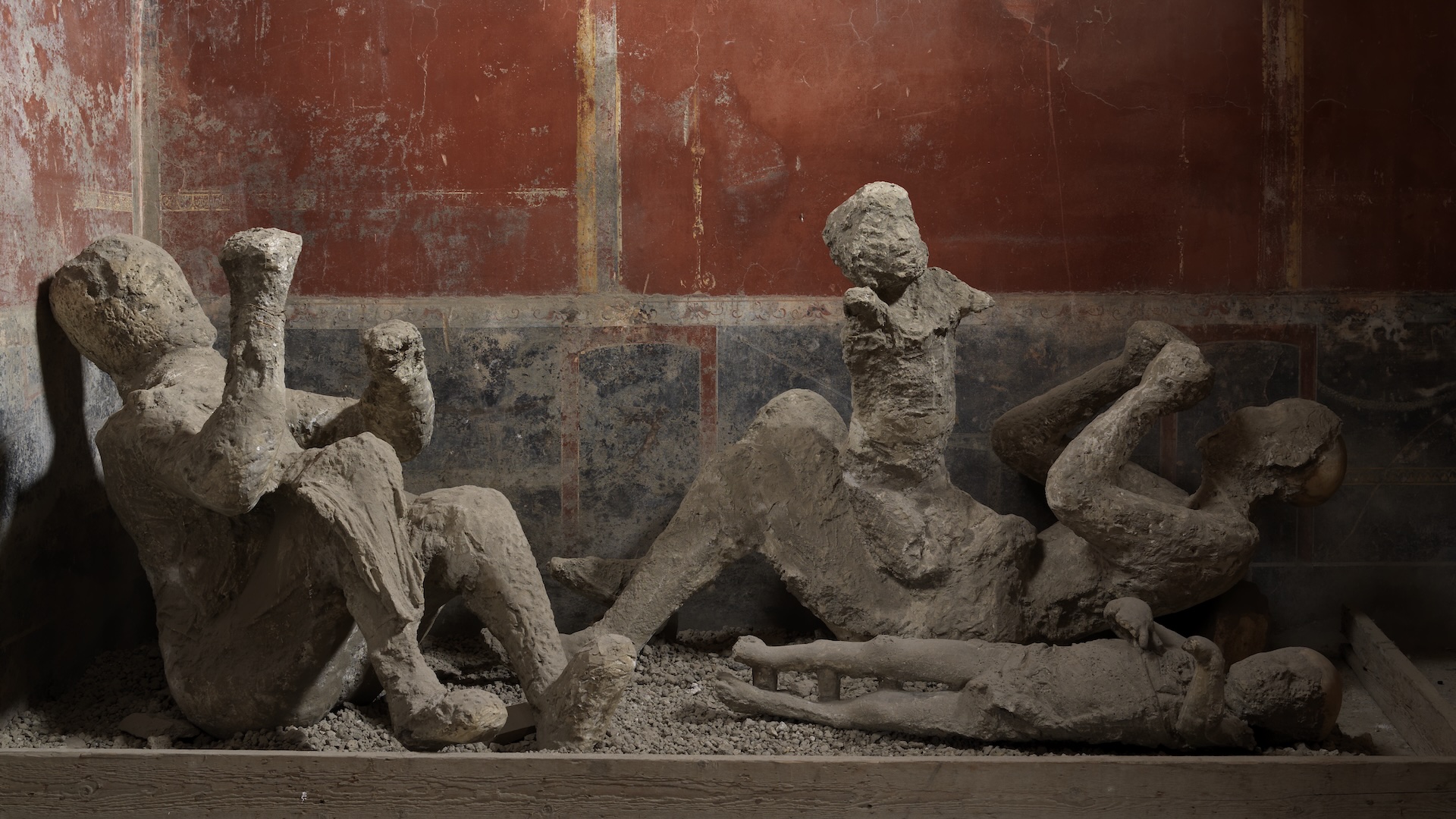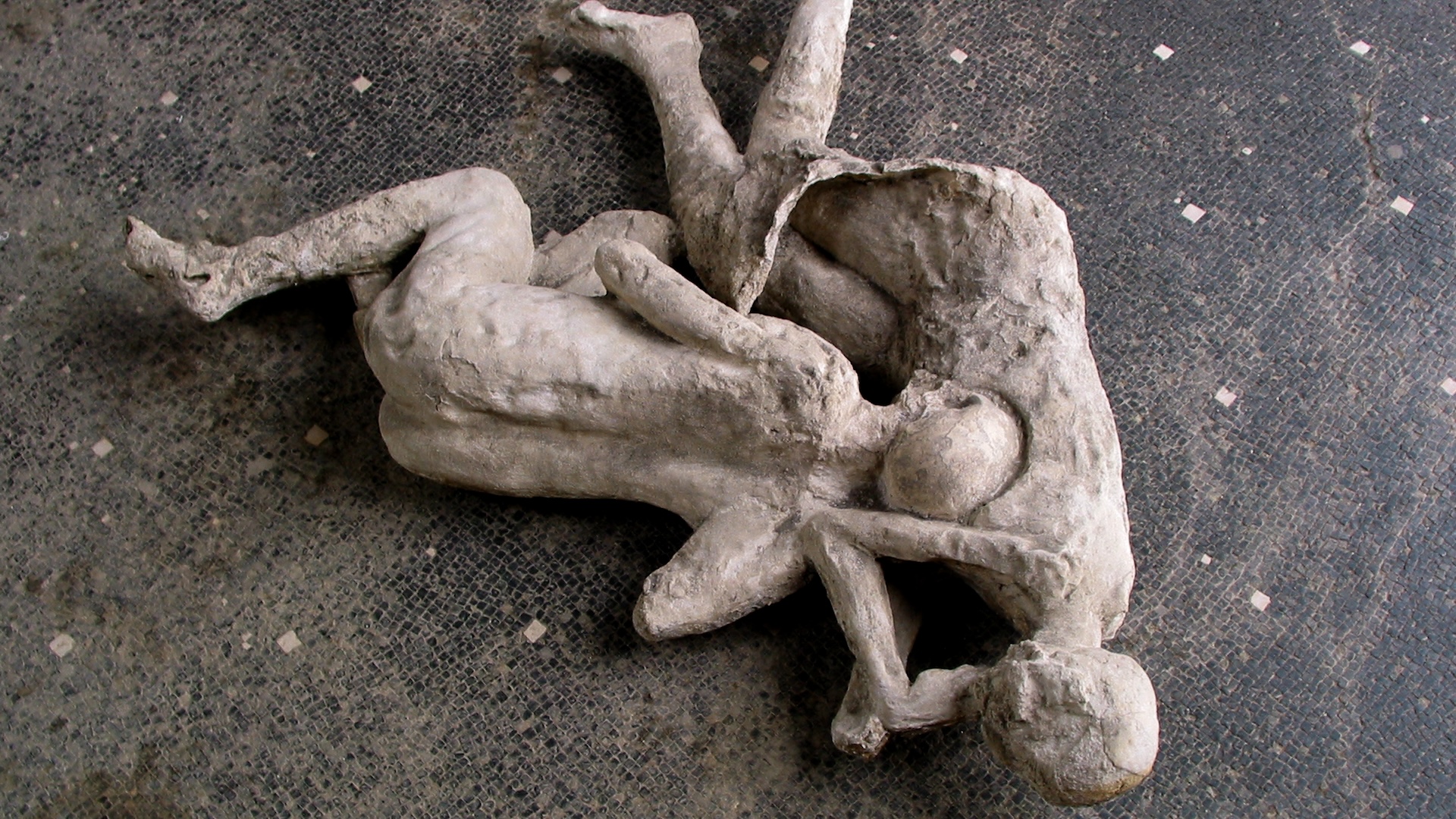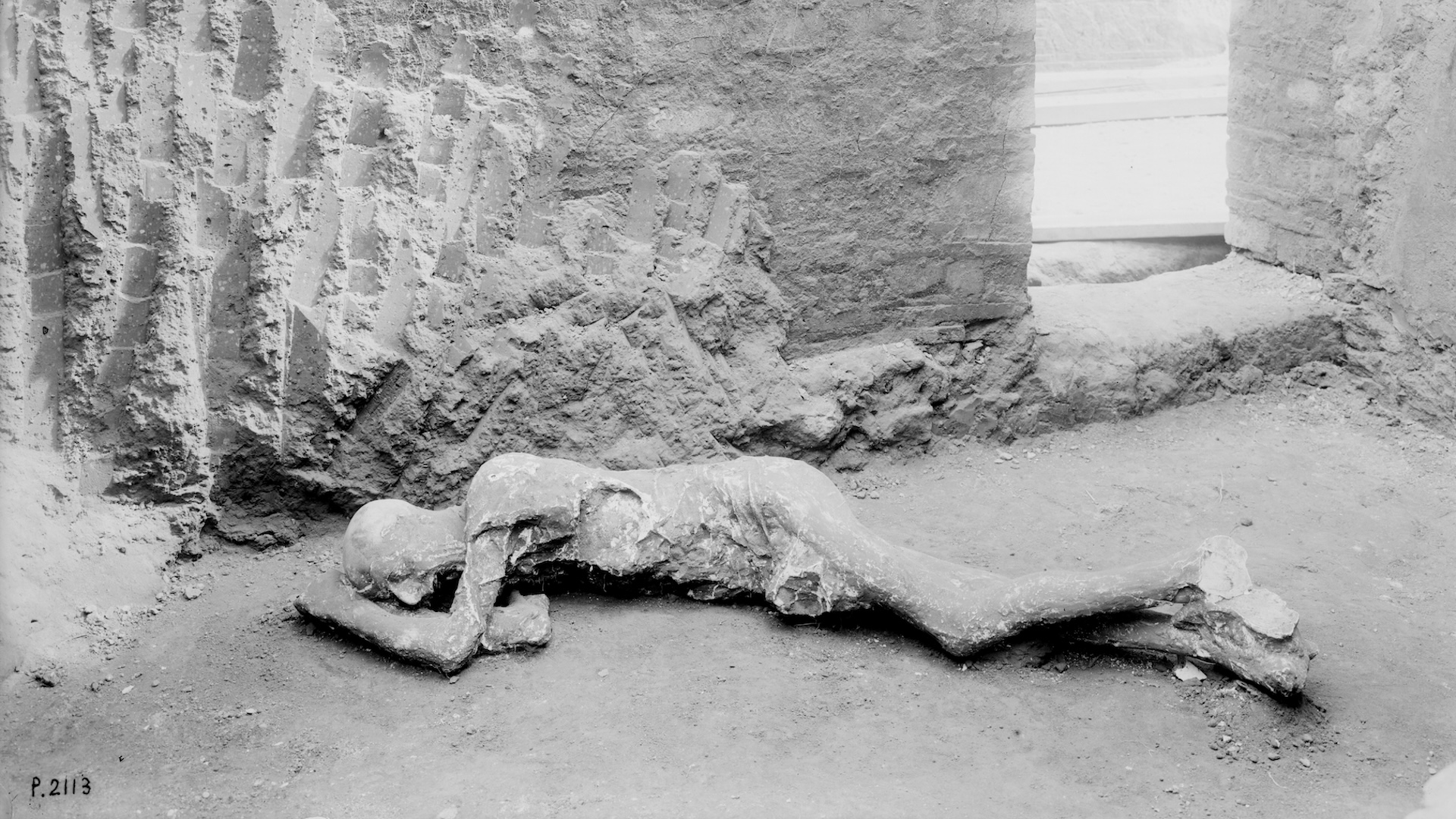
Ancient DNA taken from the Pompeii victims of Mount Vesuvius' eruption nearly 2,000 years ago reveals that some people's relationships were not what they seemed, according to a new study.
For instance, an adult who was wearing a golden bracelet and holding a child on their lap was long thought to be a mother with her child. But the new DNA analysis revealed that, in reality, the duo were "an unrelated adult male and child," study co-author David Reich, a professor of genetics at Harvard Medical School, said in a statement.
In another example, a couple who died in an embrace and were "thought to be sisters, or mother and daughter, were found to include at least one genetic male," Reich said. "These findings challenge traditional gender and familial assumptions."
In the study, published Thursday (Nov. 7) in the journal Current Biology, Reich and an international team of researchers looked at the genetics of five individuals who died during the A.D. 79 eruption that killed around 2,000 people.
When Mount Vesuvius erupted, it covered the surrounding area in a deadly layer of volcanic ash, pumice and pyroclastic flow, burying people alive and preserving the shapes of many bodies beneath the calcified layers of ash. The remains of the city were rediscovered only in the 1700s. In the following century, archaeologist Giuseppe Fiorelli perfected his plaster technique, in which he filled in the human-shaped holes left after the bodies had decomposed to create casts of the victims.
Related: Pompeii victims died in 'extreme agony,' 2 newfound skeletons reveal

The casts allowed scholars to study the victims in their last moments and make hypotheses about their identities based on details such as their locations, positions and apparel. The problem with this approach, however, was that their interpretations were influenced by modern-day assumptions — for instance, that the four people at the house with the golden bracelet, which included the adult holding the child, were two parents with their children, when in reality none of them were genetically related, the researchers wrote in the study.
For their research, the team analyzed 14 casts and extracted DNA from fragmented skeletal remains in five of them. By analyzing this genetic material, the scientists determined the individuals' genetic relationships, sex and ancestry. The team concluded that the victims had a "diverse genomic background," primarily descending from recent eastern Mediterranean immigrants, per the statement, confirming the Roman Empire's multiethnic reality.

"Our findings have significant implications for the interpretation of archaeological data and the understanding of ancient societies," study co-author Alissa Mittnik, an archaeogeneticist at Harvard Medical School and the Max Planck Institute for Evolutionary Anthropology in Germany, said in the statement. "They highlight the importance of integrating genetic data with archaeological and historical information to avoid misinterpretations based on modern assumptions."
It's possible that past misconceptions led to the "exploitation of the casts as vehicles for storytelling," meaning that curators may have manipulated the victims' "poses and relative positioning" for exhibits, the team wrote in the study.
Sex misassignment is "not uncommon" in archaeology, Carles Lalueza-Fox, a biologist at the Institute of Evolutionary Biology (CSIC-UPF) in Barcelona who specializes in the study of ancient DNA but was not involved with the study, told Live Science in an email.
"Of course we look at the past with the cultural eyes of the present and this view is sometimes distorted; for me the discovery of a man with a golden bracelet trying to save an unrelated child is more interesting and culturally complex than assuming it was a mother and her child," Lalueza-Fox said.







